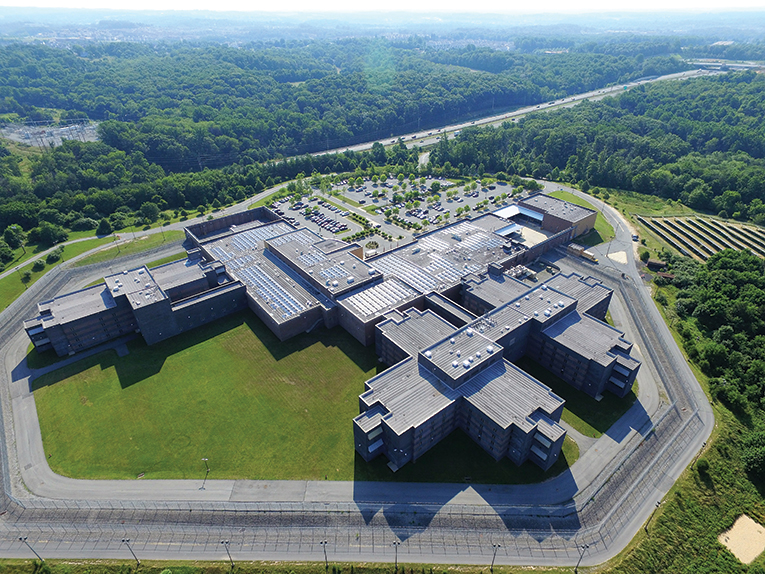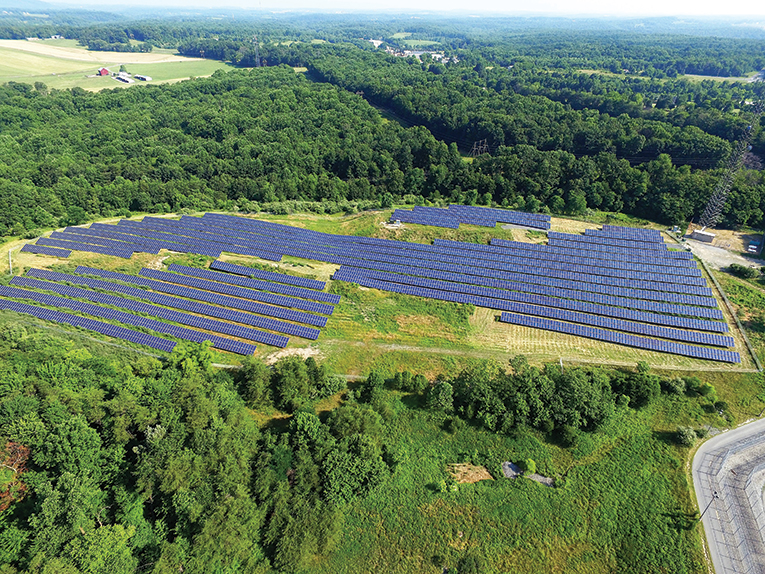Heat waves and severe storms are becoming increasingly frequent and more damaging, straining the electric grid and causing extensive power outages. Recent examples are many, and each highlights the fragility of our infrastructure and the urgent need for widespread microgrid adoption.
While it’s impossible to completely remove the risk of power failure, microgrids are a proven strategy to harden the grid - preventing and reducing the impact of extreme weather on electrical systems. Coupled with their ability to enable the system to “bounce back,” microgrids help mitigate power interruptions, increasing both life safety and business continuity.
With climate change front and center, now is the time to consider the resilience and economic benefits provided by microgrid technology.
The role of microgrids in hardening our electrical infrastructure
At best, grid failure is a short-term inconvenience; at worst, it’s a danger to people’s lives.
When grid power goes down in the midst of a major weather event, what might have been merely inconvenient, quickly becomes urgent. Streetlights and traffic lights go dark, food spoils, and HVAC stops working.
The critical facilities citizens rely on in emergencies are equally incapacitated by power loss. Hospitals, police and fire stations, and ambulance dispatch can’t function effectively without power, further endangering the populace. A microgrid’s ability to provide the necessary power to critical facilities during emergency situations is vital to the safety and security of the people who rely on them.
Additionally, grid failure poses a significant threat to business owners. According to a 2016 study by energy consultant E Source, key U.S. market segments, such as manufacturing, financial services, offices, hospitals, government/education, grocery and retail stores, forfeit about $27 billion per year due to power outages. The report also found that nearly 80 percent of businesses reported that they would, or likely will, invest in reliability improvements in the next few years, including on-site back-up generation.
A microgrid – or a network of distributed energy resources (DER), often made up of renewable resources such as solar or wind, is unique in that it serves a dual role. It can be grid-tied, which provides power to the utility grid and economic advantage to the owner, plus it has the unique capability to island itself from the main grid. In the event of an outage, this enables the microgrid to seamlessly provide the necessary energy in the absence of utility power to increase resilience and minimize the impact those affected.
While there are other energy alternatives, including diesel generators, solar and wind, none are immune to potential failure. Solar needs the sun; wind turbines only work when the wind blows; and generators rely on fossil fuels, which may not be accessible in the midst of a major storm. This is not to say microgrids are infallible, but they’re less prone to failure than other forms of energy because they utilize multiple DERs, including energy storage. If one resource ex-periences an outage, the microgrid can switch to another.

Overhead view of Montgomery County’s Correctional Facility in Maryland.
Ensuring resilience at the local level
Our national electric infrastructure is outdated and prone to failure, particularly in smaller cities, where utility poles, transformers and substations are above ground and more susceptible to external weather events. In fact, most outages are caused by damage to transmission and distribution lines and equipment, not the generation site itself.
To reduce reliance on the miles of utility lines crossing every city and town, microgrids can be deployed in a localized distribution strategy that places power generation, close to critical facilities such as fire and rescue centers, hospitals, evacuation sites, and government administration buildings. Renewable sources can supply power from shorter distances, making them ideal for a localized microgrid strategy.
A lengthy power outage can create chaos and reduce the ability to provide necessary medical assistance, shelter and communications when needed most. This was the case for the town of Milford, Ct., which lost power for seven days due to Hurricane Sandy in 2012. After a series of named storms battered the coastal town in the following years, each causing lengthy outages, the town decided to build a microgrid to strengthen its infrastructure and ensure critical support during weather and other emergencies.
The city connected five critical sites on the microgrid, three of which can serve as shelters or evacuation sites, as well as elderly housing and City Hall from which fire, rescue and police can be dispatched. The five sites will be physically connected by underground wires to decrease the odds of downed lines.
The microgrid uses multiple sources of generation, coupled with battery storage to ensure energy availability even in the absence of active generation. With the ability to island from the grid, the microgrid can maintain the power supply to these critical sites in the event of an outage. When connected, microgrid generation can be routed anywhere there is a need to ensure ongoing operations at surrounding facilities, such as hospitals, nursing homes and schools.

Solar field at Montgomery County’s Correctional Facility.
Supporting business continuity at critical facilities
Most microgrid projects are conceived to both harden the grid and offset traditional grid energy, which is typically less green, as part of a broader sustainability initiative. In most cases, the microgrid can also reduce energy use through storage or other energy efficiency strategies. Consider Milford’s microgrid example in which the residual heat produced by the microgrid is used to heat the building, thereby reducing electricity use. Additionally, the microgrid costs less per kilowatt-hour than the utility grid, saving the town about 20 percent on energy costs.
Across industries and public entities, there is increasing demand to bolster energy resilience to support business continuity at critical facilities. This was one of the driving goals behind the California Port of Long Beach’s (POLB) microgrid project. In 2015, POLB undertook a project to create a more resilient and sustainable infrastructure, support cargo operations, and supply power to vital city services, independent of the grid.
The project involved the design of a unique microgrid that is both flexible and modular thanks to the use of two separate battery energy storage systems (BESS), one of which is in a 20-foot container on a chassis. The BESS is virtually connected to the control software, but mobile to allow for future use in disaster response situations, caused by extreme weather or wildfires.
In keeping with the Port’s mission to make it one of the world’s most-sustainable marine facilities, the microgrid also uses several DERs including solar, wind, tide, geothermal and waste heat recovery (CHP). The entire city will benefit from the Port’s generation and use of greener and more sustainable energy.
Microgrid investment – a must for government infrastructure
In November 2018, the US Global Change Research Program issued its Fourth National Climate Assessment (NCA). The report recognizes microgrids for their ability to provide resiliency, reliability and flexibility for both climate adaptation and disaster response.
Citing the increasingly dry climate in regions like California, the report points to the growing threat of widespread wildfire and the ability of microgrids to quickly restore power in fire-damaged areas. But, at the current rate of implementation, the NCA cautions that microgrids and other DER are insufficient to greatly improve preparedness and resilience at the scope and scale required as our world adapts to climate change.
To increase microgrid deployment, government and other stakeholders must find new ways to finance these projects. As is the case across most local governments, limited budgets often impede large capital expenditures. Creative financing solutions are emerging that make microgrid deployments more feasible.
In 2012, following a severe storm that left more than 250,000 residents and 71 county facilities without power for several days, the administration of Montgomery County, Maryland, began investigating options to boost infrastructure resilience. In 2017, the County entered into a public-private agreement with a provider of energy and digital automation solutions and Duke Energy Renewables, a subsidiary of Duke Energy, enabling it to build two microgrids at no cost to taxpayers.
This financing model is structured to allow the customer to purchase the energy and heat generated by the microgrid, which is owned and operated by a private entity. Commonly known as energy-as-a-service, this model has been deployed at 81 percent of all microgrids around the world.
With such financing options making microgrid projects more attainable, there is little standing in the way of widespread deployment other than lack of awareness and planning. State and federal administrators must include microgrid investment in future infrastructure development planning. To ignore this option is to ignore the very real climate challenges – and increasingly violent weather incidents – our country is facing. Microgrid is a proven solution to harden the grid and support a more sustainable future.
 Don Wingate is vice president sales – Utility Solutions for Schneider Electric. Wingate leads the targeted account team focused on electric utilities and grid solutions. He also assisted in the architecture and launch of the Schneider Electric Microgrid Competency Center and is the sales sponsor of microgrid development for regulated utilities and channels to market. Prior to joining Schneider Electric, Wingate held executive and management positions with Logica Inc, Cap Gemini, Oracle and General Electric.
Don Wingate is vice president sales – Utility Solutions for Schneider Electric. Wingate leads the targeted account team focused on electric utilities and grid solutions. He also assisted in the architecture and launch of the Schneider Electric Microgrid Competency Center and is the sales sponsor of microgrid development for regulated utilities and channels to market. Prior to joining Schneider Electric, Wingate held executive and management positions with Logica Inc, Cap Gemini, Oracle and General Electric.






